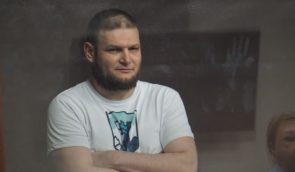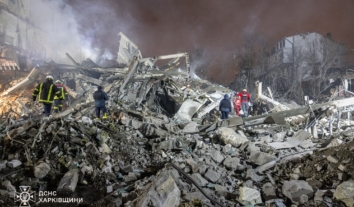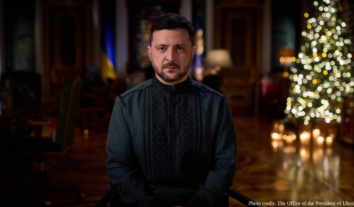Authorities Must Help Residents of Donbass Prisons and Boarding Institutions
Normal
0
false
false
false
RU
X-NONE
X-NONE
/* Style Definitions */
table.MsoNormalTable
{mso-style-name:”Обычная таблица”;
mso-tstyle-rowband-size:0;
mso-tstyle-colband-size:0;
mso-style-noshow:yes;
mso-style-priority:99;
mso-style-qformat:yes;
mso-style-parent:””;
mso-padding-alt:0cm 5.4pt 0cm 5.4pt;
mso-para-margin-top:0cm;
mso-para-margin-right:0cm;
mso-para-margin-bottom:10.0pt;
mso-para-margin-left:0cm;
line-height:115%;
mso-pagination:widow-orphan;
font-size:11.0pt;
font-family:”Calibri”,”sans-serif”;
mso-ascii-font-family:Calibri;
mso-ascii-theme-font:minor-latin;
mso-fareast-font-family:”Times New Roman”;
mso-fareast-theme-font:minor-fareast;
mso-hansi-font-family:Calibri;
mso-hansi-theme-font:minor-latin;}
Government agencies have failed to ensure the timely evacuation of people from hospitals, prisons, and other places in Donbass where residents have limited mobility. The supply of food and medicine, along with the evacuation of people, are performed mainly by the heads of those institutions and volunteers.
This was reported at a briefing by representatives of the National Preventive Mechanism (NPM) monitor group and the Parliamentary Commissioner for Human Rights, who visited places in the area of ATO where residents were incapable of moving themselves. The group visited Mariupol detention center, neuropsychiatric boarding houses, nursing homes, homes for children, and other institutions in Novoaidar, Kreminna, Dzerzhynsk, Kramatorsk, Krasnyi Lyman, Sloviansk, and Stanitsa Luhanska.
Tetiana Pechonchyk, head of the Human Rights Information Center, said: “There was lots of talk about the hostages and their release, but little was said about those who have practically become hostages two times over. We are talking about people in places of limited mobility. These places are not only penitentiary establishments, but also places where a person is in the custody of the state. For example, social institutions, such as neuropsychiatric boarding houses, geriatric houses, and others. A common feature of all these institutions is that people usually cannot leave them and are under the care or control of the state.”
One of the biggest problems is that evacuations from the occupied territories were not performed in time. Some establishments were evacuated in whole or in part, some of them were not, and of those left behind very little is known. For example, it is known that an evacuation was done from Horlivka boarding house for people with disabilities, but there was not enough time to evacuate 20 people who were bedridden. As of February, only five of the 20 people survived, stated Pechonchyk.
After visits by the monitoring group to those institutions in Ukraine-controlled territory, it was found that coordination between various departments and ministries on the situation is lacking. There is no common understanding of what to do if the situation in the territory escalates or how to prevent human rights violations. Evacuation is complicated by the fact that some institutions are subject to local authorities, so people sometimes can only be taken elsewhere in the area. It is also a problem that not all institutions were ready for the conflict in the East and do not have bomb shelters in their basements for protection.
Many establishments are overcrowded. For example, in the neuropsychiatric boarding house in Sloviansk, which has a capacity for 320 people, there were about 600 residents at the time of the visit of the monitoring group. 365 women from the Torez neuropsychiatric boarding were evacuated to there. Monitors noted that it was necessary, but people cannot stay long in such conditions, when, for example, the rooms do not even have passages between the beds.
According to Oleksandr Gatiyatullin, NPM monitor and Expert in the Department of Advocacy and Legal Support at “All-Ukrainian Network of People Living with HIV,” there were 36 institutions of the State Penitentiary Service in the Donetsk and Luhansk regions, but only 7 of them remained under Ukrainian control while the others went under the control of the “DPR” and “LPR.” But, the people in these institutions remained. 500 of them who have HIV-AIDS receive art therapy, which is delivered to the penitentiaries by representatives of the organization.
“The State Penitentiary Service has refused to supply medications to these facilities since last summer, and not only to institutions that are no longer under their control, but also to those that have remained subordinate to the service,” noted Gatiyatullin.
Back in May and June, there was possibility to evacuate those people. There were plans, but apart from instructions, nothing was done. Such an evacuation is a complex process, so coordination must occur between the railroad, the National Guard, and the ATO command. Monitors have found that, for example, prison transfers have not taken place from Artemivsk prison for 8 months. Among convicts there are people who have tuberculosis and require special treatment. After the visit, the problem of transfers was solved, as well as the supply of medicine into Mariupol prison.
“According to official data, during the conflict, over 65 children have been killed and 127 injured in the Donetsk and Luhansk regions (as of March 23rd 2015). Information about the boarding school victims is not available. There is data on the death of two people in geriatric boarding houses,” said Olena Temchenko, Deputy Head of the Department for NPM implementation under the Commissioner for Human Rights.
She noted that removing people from territories not currently under government control is virtually impossible. Militants simply would not let them through checkpoints.
Andriy Chernousov, Head of the All-Ukrainian NGO “Independent Monitors’ Association” said that they recently completed a telephone survey of places of limited mobility which are located within the so-called “Republics.” Residents of 141 such institutions were interviewed.
“Unfortunately, only 24 institutions responded. The rest were either evacuated, closed, the connection with them is damaged, or they say frankly that they are no longer part of Ukraine and will not give information to people who call from Ukraine,” said Chernousov.
According to him, the situation with neuropsychiatric boarding houses and mental hospitals in what is now the area of the ATO was bad before the beginning of the conflict. They were under-funded and under-equipped. With the outbreak of hostilities, the situation has worsened because qualified staff has fled and there is no food or medicine for chronic patients.
“When asked whether they support Ukraine or the ‘DPR’, I think that many of them no longer support anyone. The only questions that they have today are how to survive, how to live until tomorrow,” said Chernousov.
He noted that his organization monitors and sends data to the WHO, the OSCE and the UN. If the state develops a concrete plan to help people in places of limited mobility, the international community will finance this initiative because we are talking about such small expenses.
The monitoring group notes that the state must develop a plan as soon as possible. To this end, twenty appeals to the Prime Minister of Ukraine and the relevant ministries and agencies have been prepared by the National Preventive Mechanism since the beginning of its visits to the ATO.
















